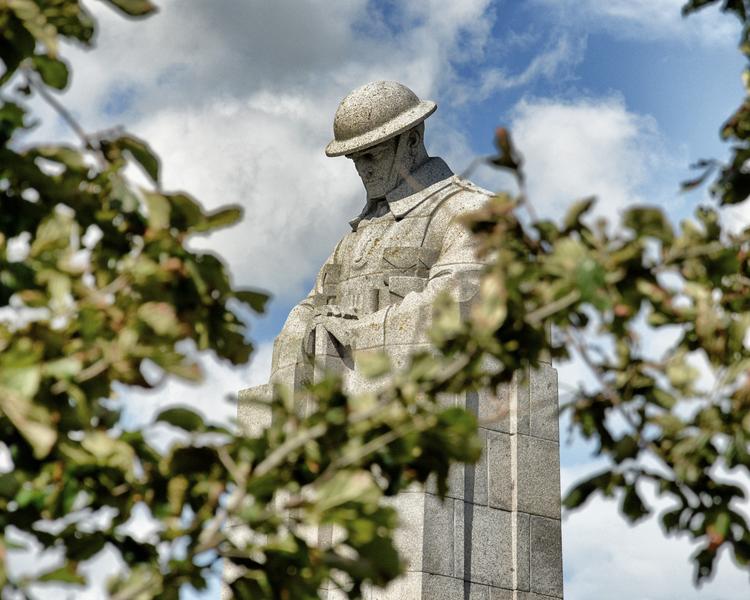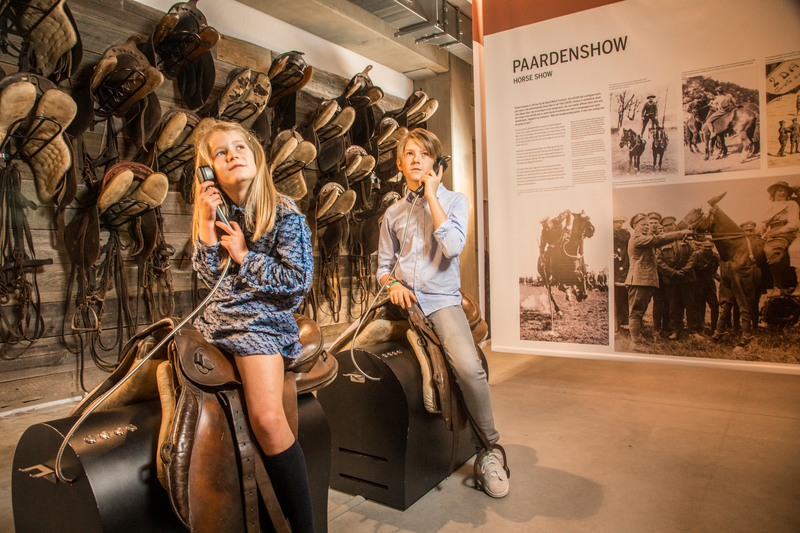Day 1
Messines Tourist Information Point
Markt 1, Mesen
This is the obvious starting point for your visit to Messines, the smallest town in Belgium. The information centre is located in the former town hall and explains the role of Messines throughout history, with the main focus on the First World War. The role of the New Zealanders during the mine battle of 1917 and the special symbolic value of the Irish Peace Tower are only a couple of the topics that are covered.
New Zealand soldier statue
Markt, Mesen
Walk up to the New Zealand soldier statue in the market square of Messines. It commemorates all soldiers of the New Zealand division who fought in the battle of Messines Ridge.
Messines Ridge Memorial to the Missing
Nieuwkerkestraat, Mesen
This memorial is located at the entrance to Messines Ridge British Cemetery and bears the names of 839 New Zealand soldiers who died during the Battle of Messines in 1917 and have no known grave. There are similar memorials to New Zealand’s war dead in Tyne Cot Cemetery and Buttes New British Cemetery. The cemetery also contains the graves of 115 New Zealand soldiers.
Bayernwald
Voormezelestraat, Wijtschate
The Bayernwald site (tickets are available online here) shows how the German army did very much the same as the Allies - dig mines and trenches and build bunkers. The site consists of two mine shafts, a trench system and four bunkers. A series of information panels give details of the events which took place here and explain what life was really like during WWI.
In Flanders Fields Museum
Grote Markt 34, Ieper
Up next: the hub of the WWI commemoration - the In Flanders Fields Museum. Instead of a ticket, we get a white bracelet with a red poppy. The recently renovated museum - located in the impressive Cloth Hall in Ypres, highlights the story of the invasion, the trench war and the remembrance since the armistice, while focusing on personal stories. We take a deep breath and climb the bell-tower (231 steps!) to have a look at what were once the battlefields.
Menin Gate
Menenstraat, Ieper
After dinner we attend the Last Post ceremony under the Menin Gate. The Menin Gate is a gigantic construction, but still not big enough to mention all the names of the fallen Commonwealth soldiers, who didn’t have a grave because their bodies were not identified. The Gate ‘only’ mentions 55,000 names on the walls. The other soldiers names are written on two other monuments.
The Last Post
Menenstraat, Ieper
Silent crowds wait beneath the Menin Gate for the stroke of 8 o’clock. Then the volunteer buglers from the local fire brigade raise their instruments to play the Last Post, the traditional final salute to the fallen soldiers. Ever since 1928, the notes of the Last Post have broken the silence across the cobbled streets of Ypres, a town entirely rebuilt after the devastation of the First World War. Nothing quite prepares you for the powerful emotion of experiencing this moving ceremony first hand.
Day 2
Nine Elms Military Cemetery
Helleketelweg, Poperinge
The cemetery was first used from September to December 1917 for burials from the 3rd Australian and 44th Casualty Clearing Stations, which had been moved to Poperinge in preparation for the Battle of Passchendaele. Among the 270 New Zealanders buried here is Dave Gallaher. David "Dave" Gallaher (30 October 1873 - 4 October 1917) was a new Zealand rugby union footballer, best known as the captain of "The Originals", the first New Zealand national rugby union team to be known as the All Blacks. Although exempt from conscription due to his age, Gallaher also volunteered to fight in World War I, and apparently altered his date of birth to 31 October 1876. He saw action at Ypres, and was killed during the Passchendaele offensive on 4 October 1917.
Passchendaele Museum
Berten Pilsenstraat 5a, Zonnebeke
Up next is the heart of the ‘Third Battle of Ypres’ or ‘Battle of Passchendaele’ as it is more commonly known. The name is a symbol of senseless military violence. The dugout tunnel with communication and dressing post, headquarters, workplaces and dormitories, gives us an idea of how the soldiers had to live underground, like moles, because there was nothing left above ground. It’s impressive, as is the Museum with its collection of historical artefacts, images, movies and dioramas. We end our visit to the museum outside in the trenches before heading into the park that surrounds the museum.
Tyne Cot cemetery
Vijfwegestraat, Zonnebeke
With its arched wall and colonnades in white stone, the Missing Memorial of Tyne Cot Cemetery instils respect. This is the largest military cemetery of the Commonwealth War Graves Commision in the world. Almost 12,000 soldiers are buried here, of which 520 graves of New Zealand soldiers. 12,000 white crosses, row after row. We stand in awe.
On the Memorial Wall are the names of the 34,957 missing soldiers who fell after 15th, August 1917. A central apse in the memorial wall forms the New Zealand Memorial. It bears the names of nearly 1,200 officers and men of the New Zealand Force.
Polygon Wood
Lange Dreve Zonnebeke
Deep in the heart of Polygon wood stands Buttes New British Cemetery and the New Zealand memorial to the Missing, which commemorates 383 soldiers of the New Zealand division who died in the Polygon Wood sector and have no known grave. The majority died in the trenches, or while working and carrying, and the conditions in the Salient during the winter 1917-1918 must explain the comparatively large number of names on this memorial, which deals with only one set attack on a German position.
On top of the butte (hill), there is the Memorial to the 5th Australian Division. Polygon Wood still contains the remains of several shelters. Each year on ANZAC day (25 April), the sacrifice of the ANZAC soldiers is commemorated during an impressive dawn service in this very location. Polygon Wood Cemetery lies just across the other side of the road.
New Zealand Memorial
‘s Graventafelstraat, Zonnebeke
This memorial commemorates the New Zealand Division’s participation in the Battle of Broodseinde on 4 October 1917. This attack by ANZAC forces successfully pushed forward the Allied trench line in the early part of the Passchendaele offensive but was followed by an inadequately prepared attack of 12 October 1917.




